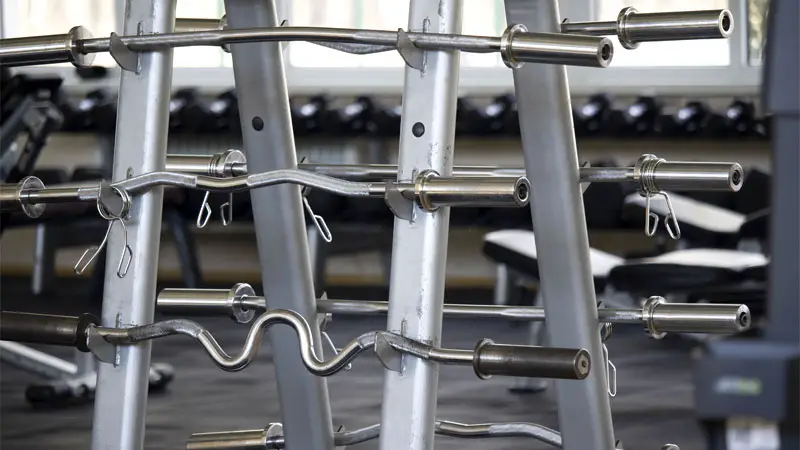When you think of weightlifting, the first thing that come to mind is probably a barrel-chested man lifting heavy disks on either side of a metal bar. But you might be surprised to know barbells are a lot more complicated than they first seem. In fact, there have been a lot of innovations over the years to make weightlifting easier or more challenging.
Most barbells differ based on two important factors: grip and whip. Knurling is often added to the grip of barbells to make it easier to retain your grip when sweating. Others address the issue by having grips that rotate or a bent bar to provide better gripping angles.
Meanwhile, the whip relates to how flexible the bar is. Sturdier bars can often be safer and tend to hold more weight. However, bars with a larger whip improve muscle balance by requiring the user to adjust their center of gravity to keep the bar stable.
Here are 19 different types of barbells and what they do.
See Also: 14 Types of Basketball Dunks
Types of Barbells
1. One-Inch Barbell

Sometimes referred to as the regular 1” barbell, this is the classic design you tend to picture, although it’s not as commonly used these days. The 5, 6, or 7-foot long shaft has a one-inch diameter.
Unfortunately, this cheap and reliable barbell isn’t compatible with modern weight plates, which have a 2” hole, so they’re slowly becoming obsolete.
2. 360-Degree Curl Bar

This barbell has been specially designed with rotating handles to improve the range of motion. The smoother inward to outward transitions cause far less strain on the wrists and make it easier to transition between workouts.
3. Aluminum Bar

Weighing in at only 15 pounds (6-ft length), these five to seven foot bars are perfect for beginners or those in rehabilitation. However, this lighter construction means a lower maximum capacity, making it a poor choice for more experienced lifters.
4. Axle Bar

A staple among powerlifters, this barbell has a thick two-inch diameter grip with no knurling and non-rotating collars. It’s useful in bench pressing and deadlifting, with the ability to improve grip strength and muscle activation depending on how they’re used. They’re not for beginners, however.
Read Also: 7 Kinds of Bowling
5. Bamboo Bar

For those unfamiliar with the durability and flexibility of bamboo, the idea of a barbell made of wood boggles the mind. However, the bar uses oscillating kinetic energy (OKE) to provide improved stability.
The bamboo bar (BandBell Bar) can hold around 300 pounds and are excellent for working on muscle activation or stability.
6. Cambered Bar
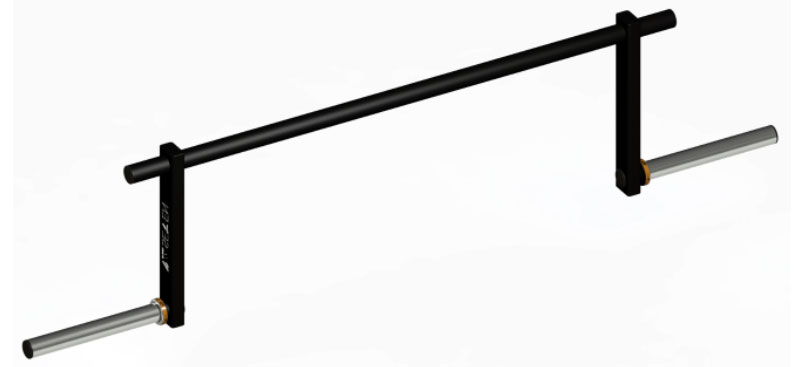
Sometimes referred to as an off-set bar, this seven-foot barbell is designed specifically for squatting and fits in the power rack. Its design has a dual-purpose.
The 45-lb bar regulates the body’s center of mass, isolating leg strength training and protecting from excess back strain. Meanwhile, those with rotator issues or are recovering from shoulder injuries can use this bar to safely work out.
7. Deadlift Bar
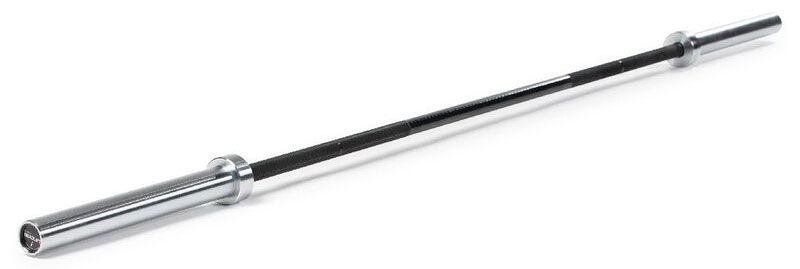
When you’re into deadlifting, this specialized bar has all the necessary features. They weigh in at 45 pounds with a seven-foot shaft that has a slightly smaller diameter and sharp knurling for easier gripping.
It also has an improved whip and tensile strength around 200,000 PSI. The high capacity (up to 2,000 pounds or more) is perfect for deadlift but a poor choice for heavy benching.
Read Also: 9 Types of Diets
8. EZ Curl Bar
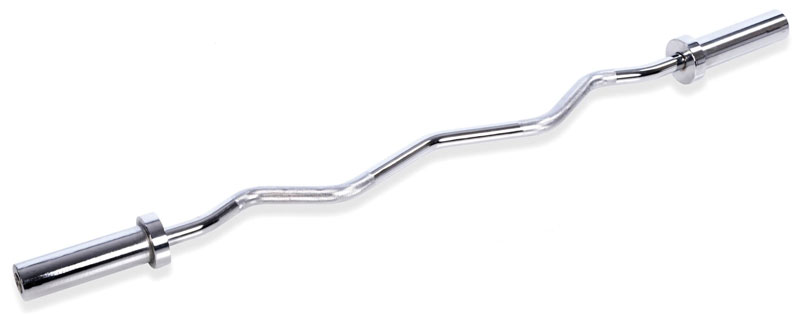
When you want to focus on your biceps and triceps, this is the go-to barbell. It’s one of the most common barbells out there and ranges from three to five feet long and weighs a mere 20 to 30 pounds.
The curved bar allows for more natural wrist positioning and can be used to lift heavier weights as well as reducing the risk of injury.
9. Farmer’s Walk Bar
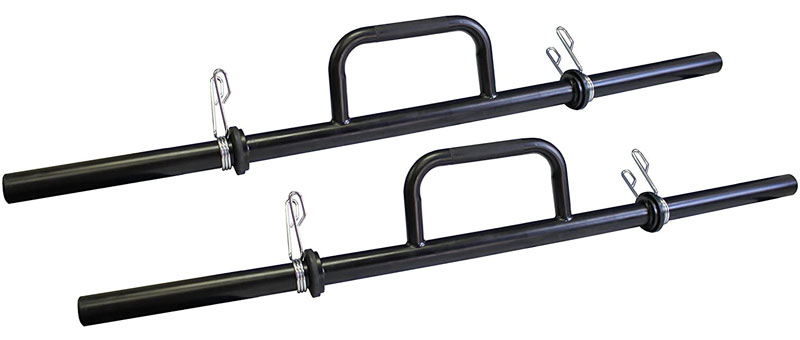
The farmer’s walk is a workout designed for intense mass and strength, usually involving dumbbells or hex bars. However, the specialized farmer’s walk bar is around 50 inches long, with each handle ranging from 25 to 50lbs.
It requires extra stabilization to use, creating superior strength development to standard equipment.
10. Freak Bar
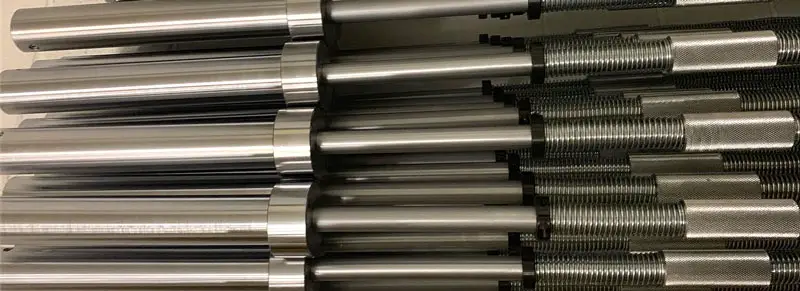
With a patent still pending, this new style of barbell is quite unusual. Created by Westside Barbell, the freak barbell has springs within the shaft to create superior stability. How this design will affect the powerlifting world remains to be seen.
11. Hex Bar (AKA Trap Bar)
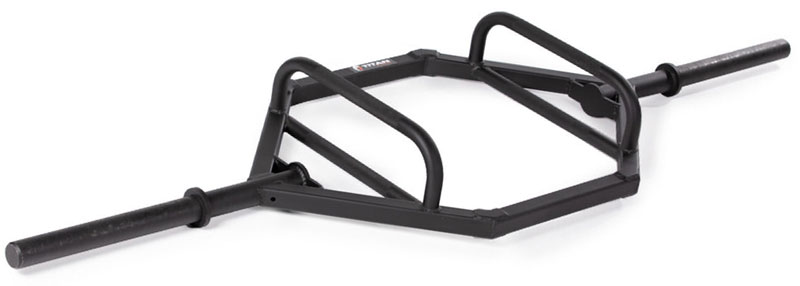
Deadlifting and farmer walks can be quite dangerous because of the way they disrupt the body’s natural center of gravity. The trap bar solves this problem by creating a hexagonal yoke in the middle of the bar.
The design can reduce back strain, improve form, and greatly reduce the risk of injury. Despite having limited use, these 50 to 70lb barbells have become quite popular since their introduction in the 1980s.
12. Hollow Bar
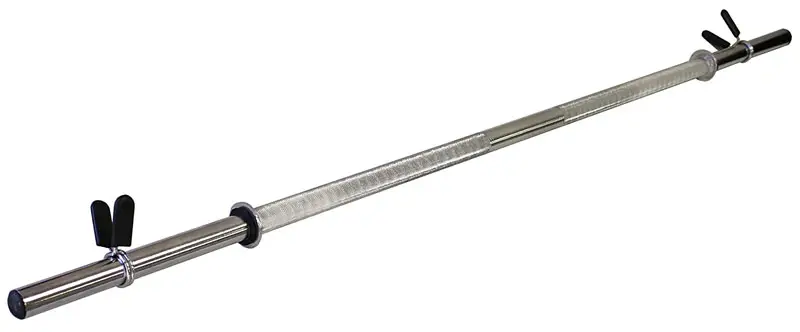
You’ll be hard-pressed to find a barbell lighter than the two to four-pound hollow bar. These bars are five to six feet long and is most commonly used during rehabilitation.
They’re not sturdy enough to handle heavy loads due to their hollow design, but do feature knurling for an improved grip.
13. Buffalo Bar (or Duffalo Bar)
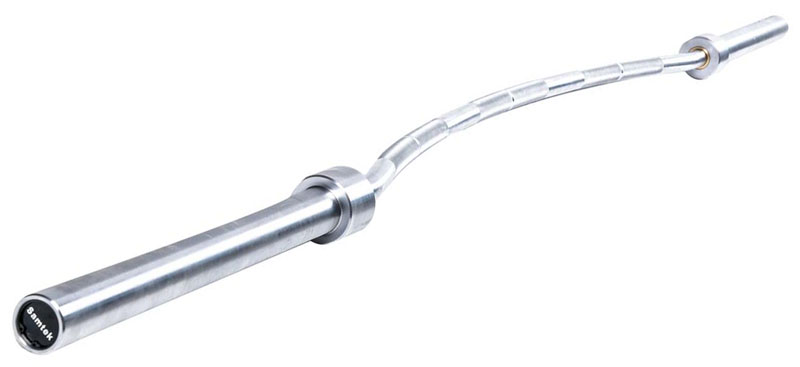
Originally called the “buffalo bar” and then redesigned by Chris Duffin and renamed the Duffalo bar, this barbell is meant to help reduce stress against the back and shoulders while lifting. It has a bend in the middle to provide extra support when pressing or squatting.
14. Log Bar

This is an expensive bar designed to be used in training for powerlifting competitions. They’re big, bulky, and can weigh more than 100lbs without any additional plates. Due to the price and specialized function, it’s extremely rare to find these in gyms.
15. Olympic Barbell
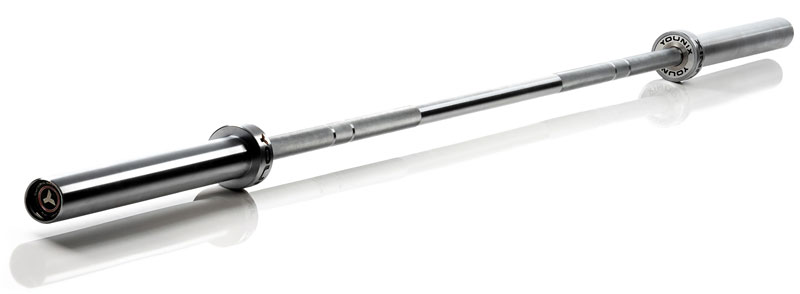
Despite the elite-sounding name, this is currently the most common type of barbell used at gyms. They’re built with a special type of steel designed to handle extreme loads while still having more whip than standard bars.
At 7.2 feet long and weighing 45 pounds on its own, the Olympic bar follows universal standards, can hold more weight than most barbells, and offers various forms of knurling.
16. Safety Squat Bar
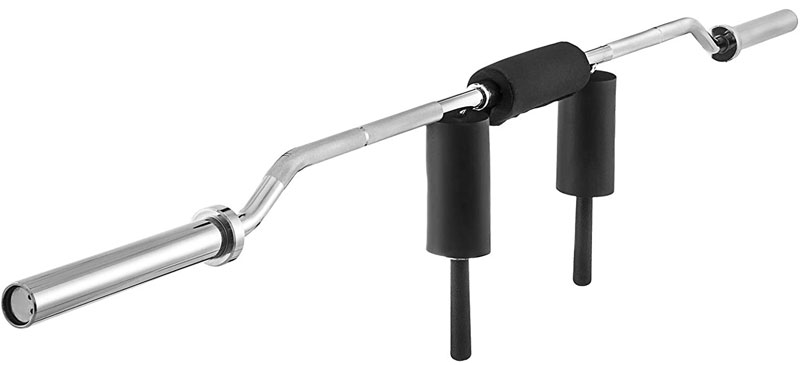
As the name implies, the safety bar is a perfect learning tool for squats, with handles for an easier grip and padding for better neck support. The design makes it easier for those with shoulder mobility issues while still improving the user’s center of gravity.
Despite weighing up to 60 pounds and having varied sizes based on the manufacturer, the bar is really good for reducing shoulder and neck pain. Its use is limited, but for lunges and squatting, this is one of the best barbells out there for those with pain issues.
17. Swiss Bar

This versatile bar has a wide range of gripping patterns, making it a perfect choice for shoes recovering from wrist injuries. You can find them in various shapes and sizes, giving them a much wider range of use, although they’re not as useful as the standard barbell.
Another issue is that there’s no standard shape or size, making it more difficult to find one that works best for your own needs. The good news is that the Swiss barbell is perfect for pushing and pulling movements, allowing you to work muscle tissues that other barbells neglect.
18. Tsunami Bar
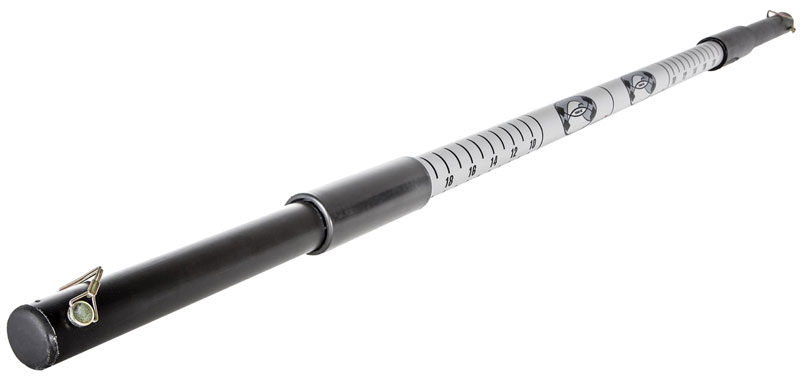
When you think of barbells, you likely picture a fairly sturdy bat with little to no whip. The tsunami bar turns this concept on its ear by intentionally being as flexible as possible.
When doing a chest press, the wobbly nature engages more muscle tissue to try and stabilize the bar. This results in superior hypertrophy and strength gains, as well as assisting in overall balance.
19. Women’s Olympic Bar

The major difference between this barbell and the regular Olympic barbell is its diameter, which is a smaller 1.1 inches to accommodate smaller hands. This lesser mass comes with some drawbacks, however, as the bar is only 33-lbs and seven feet long, lacking central knurling.
They also have a smaller weight capacity, but are a good choice for both men and women who have trouble gripping standard diameter bars.

